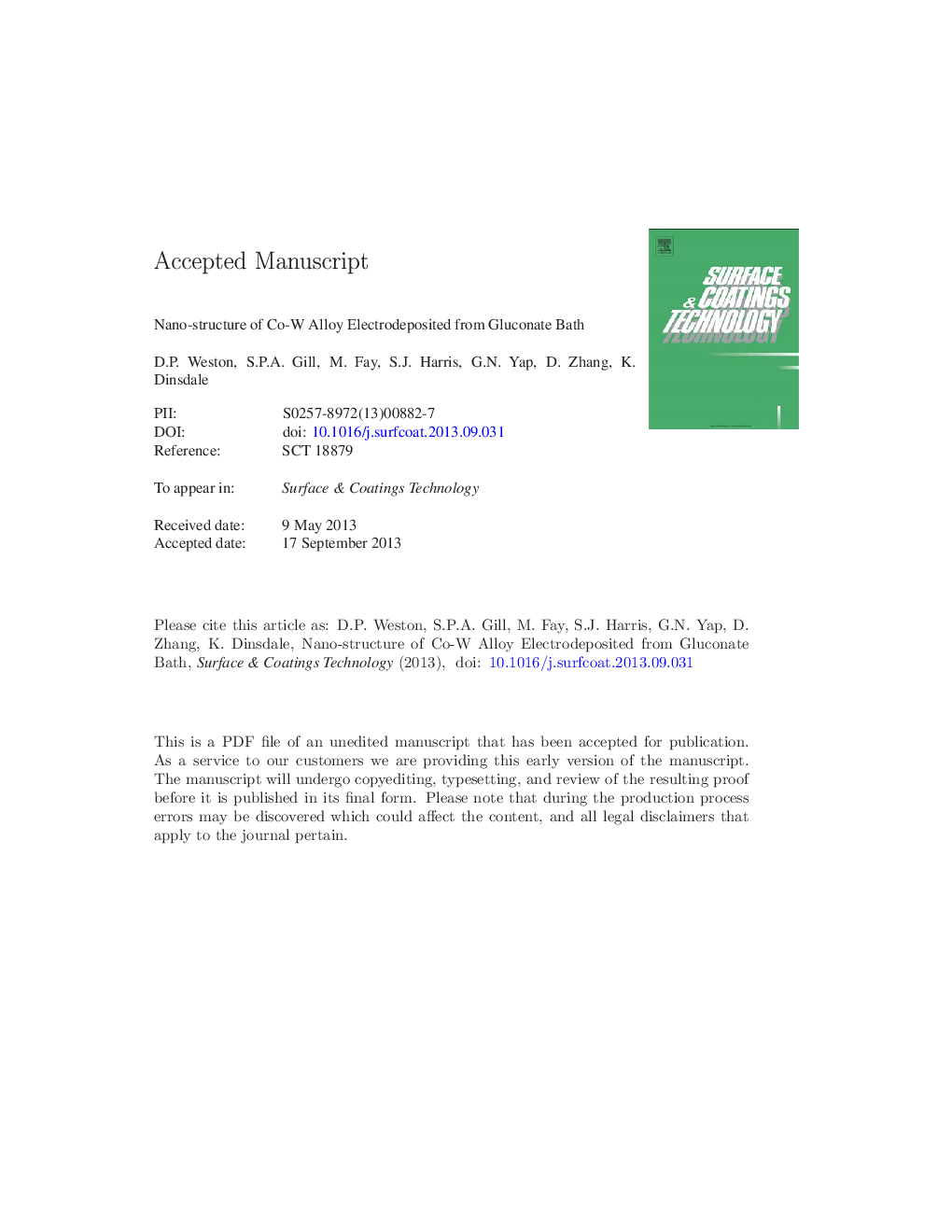| Article ID | Journal | Published Year | Pages | File Type |
|---|---|---|---|---|
| 8028859 | Surface and Coatings Technology | 2013 | 37 Pages |
Abstract
A series of ten Co-W coatings have been electrodeposited from the same gluconate bath. The W content of the samples is found to decrease from 22.7 at.% in the first sample to 11.0 at.% in the final sample as the consequent W content of the bath is reduced. The third coating in the series with 18.0 at.% W has been investigated by SEM, TEM and XRD and microhardness testing. This is shown to have a unique, well-ordered, self-organised two-phase nanostructure of platelets parallel to the growth direction separated by a relatively thick grain boundary phase. The platelets have a very well-defined width of 4-5 nm and the interfacial phase is roughly 1 nm thick. The Gibbs free energy for a solid-solution of W in HCP Co is shown to possess spinodal chemistry between the ranges of 8 and 23 at.% W. All the coatings deposited have compositions within this range and this is proposed as a possible mechanism for the origin of the nano-platelet formation. This provides a very well-defined length scale for the lamellar nanostructure. It is shown that the resulting nanostructure is not in compositional equilibrium, but that a final equilibrium state for the self-organised nanocrystalline structure does exist and can be achieved through further W segregation, propagated by annealing at 600 °C. The hardness of the coating is found to increase with the nominal W content, and this is predicted to arise from solid-solution strengthening of the platelets rather than an increase in the area of dislocation-pinning grain boundaries. The uniformity of the underlying nanostructure is expected to significantly enhance the mechanical properties of the coating.
Related Topics
Physical Sciences and Engineering
Materials Science
Nanotechnology
Authors
D.P. Weston, S.P.A. Gill, M. Fay, S.J. Harris, G.N. Yap, D. Zhang, K. Dinsdale,
